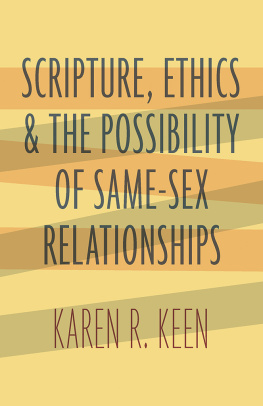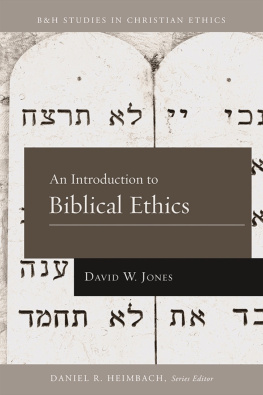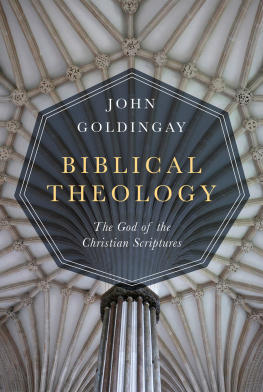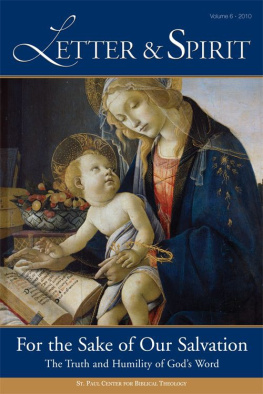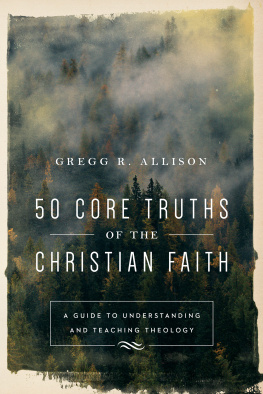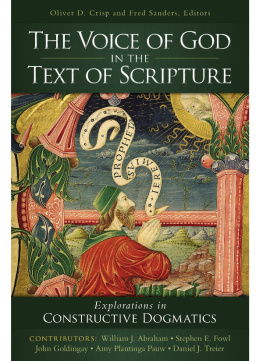Scripture, Ethics,
and the Possibility of
Same-Sex Relationships
Karen R. Keen
WM. B. EERDMANS PUBLISHING COMPANY
GRAND RAPIDS, MICHIGAN
Wm. B. Eerdmans Publishing Co.
4035 Park East Court SE, Grand Rapids, Michigan 49546
www.eerdmans.com
2018 Karen R. Keen
All rights reserved
Published 2018
2726252423222120191812345678910
ISBN978-0-8028-7654-6
eISBN978-1-4674-5133-8
Library of Congress Cataloging-in-Publication Data
Names: Keen, Karen R., 1973- author.
Title: Scripture, ethics, and the possibility of same-sex relationships / Karen R. Keen.
Description: Grand Rapids : Eerdmans Publishing Co., 2018. | Includes bibliographical references.
Identifiers: LCCN 2018022305 | ISBN 9780802876546 (pbk. : alk. paper)
Subjects: LCSH: HomosexualityReligious aspectsChristianity.
Classification: LCC BR115.H6 K44 2018 | DDC 261.8/35766dc23
LC record available at https://lccn.loc.gov/2018022305
In memory of
Ryan Robertson
(19892009)
And to his loving parents,
Rob and Linda
Just because he breathes
justbecausehebreathes.com
Contents
O ver the Christmas holiday last year, my sister and I were driving to an antique shop with teenage nieces in the back seat when she turned to me and asked, Did you know Christian writer Jen Hatmaker supports gay marriage now? I dont understand her theology. Can you explain it? I was grateful for her question and desire to learn more about a challenging topic. The evangelical world is facing increasing tension as leaders like Hatmaker express affirmation of same-sex relationships. Last year, the internet exploded over influential pastor Eugene Petersons statement that he would officiate a gay marriage. The author of The Message Bible translation quickly recanted in the face of negative publicity. So, what is causing some Christians to switch sides in the debate? I wrote this book for those like my sister who want to better understand the answer to that question.
I also wrote this book for those who find themselves in my shoes. These pages reflect years of prayer and study as I have sought personal direction. That search started in my late teens when I consciously admitted to myself that I am gay. For a girl who was raised a conservative Baptist from the cradle, that was a terrifying realization. How was it even possible? I had always been taught that gay and lesbian people are unbelievers outside the church. I was a devout Christian who dreamed of being a missionary like my hero, Amy Carmichael.
That experience awakened me to the reality that not everything is as simple as what I learned in Sunday school. My presuppositions about God were shaken. For several years, I was racked with grief and confusion. But eventually I reached a place of spiritual peace. I resigned myself to a celibate life and focused on serving in ministry. I went to seminary and on to postgraduate work in biblical studies. Then something happened. The more I dug deep into the Bible, the more I felt a gnawing sense that my previous conclusions were incomplete. New questions arose that I had not considered before.
As I continued to pray and study, I increasingly came to the views that I present in this book. I found that Scripture offers a life-giving vision I had not seen before. The conclusions I draw do not come out of attempts to rationalize my own desire for a same-sex relationship. As I write this preface, I have been living celibate for sixteen years. Indeed, there is no woman in sight. I dont know what the future holds for me relationally, but I walk into it with open palms.
In the following pages, I take you on the journey I have traveled in the search for truth. In Chapter 1, I show you the history of the churchs response to the gay and lesbian community. Our theological views are affected not only by what we read in the Bible but also by the interactions we have with people. In the past, many Christians believed false stereotypes that badly mischaracterized gay people. These ghost stories are finally being put to rest as more gay and lesbian people find the courage to share their lives with Christian friends and family. As our knowledge of human sexuality and sexual orientation increases, I suspect we will continue to grow in our pastoral responses.
In Chapter 2, I take you back in time to the land of Israel. What did the biblical authors believe about same-sex relationships and why? To understand what the Bible says, we will explore the inspired authors intended meaning. From there, in Chapter 3, I present the most compelling arguments in the debate from both the traditionalist and the progressive points of view.
In Chapter 4, I shift gears from clarifying the foundational issues presented in the first three chapters to laying out my own arguments. This chapter addresses common confusion when it comes to interpreting the Bible. Specifically, how do we make sense of Old Testament laws, and when do we apply them to our own lives? Is the Levitical law against male-male sexual intercourse still binding?
Chapters 5 and 6 are where the rubber meets the road. In Chapter 5, I discuss the question of how we determine Gods will from the Bible. In what ways does the Bible inform our ethical practice? To explore this, I turn to the biblical authors themselves to see how they interpret scriptural texts for ethics. In Chapter 6, I invite you to consider the implications of mandatory lifelong celibacy for gay and lesbian people. Is lifelong celibacy possible for everyone who attempts it?
In Chapter 7 I consider the effects of the fall in light of scientific evidence. Is same-sex attraction a symptom of evil desire, a medical condition, or simply representative of human variation in sexual development? Finally, in Chapter 8, I discuss suggestions for moving forward. How might the church reimagine its response to the gay and lesbian community?
My hope is that these chapters will be life-giving. I want to take the conversation beyond its current stalemate to help Christians contemplate new ways of thinking about this controversial topic. I also desire to equip pastors, counselors, and other church leaders who are looking for biblically sound guidance on same-sex relationships. Last but not least, I hope this book will encourage the hearts of gay and lesbian people who often feel painfully torn between faith and sexuality.
KAREN R. KEEN, THM
Durham, North Carolina
August 2017
W hen it comes to same-sex relationships, theres one thing we cannot forget: people. The conversation is about more than doctrinal debates and biblical interpretation. It encompasses the churchs response to gay and lesbian people as holistic individuals with hearts and minds and dreams. This requires challenging false caricatures. How does the church understand and perceive gay people? What kinds of stories does the church tell about those who experience same-sex attraction? Perceptions about why people have such attractions or their motives for being in same-sex relationships significantly affect the treatment of gay and lesbian people. So, before jumping into the biblical debate, lets look at the churchs response, especially within our own context in the last fifty years. The body of Christ can better see the way forward when it examines its own attitudes and actions within historical trends.
Until the twentieth century, the church primarily viewed those with same-sex attraction as spiritually corrupt.
Chrysostoms assumption of spiritual depravity is also evident in the writings of Reformer Martin Luther. He believed same-sex attraction resulted from a person turning away from God, allowing the devil to exert pressure that extinguishes the fire of natural desire and stirs up another, which is contrary to nature. He believed God gave people over to vile affections as punishment for idolatry. He also commented with apparent approval that these individuals were being sentenced to death by his own government.

